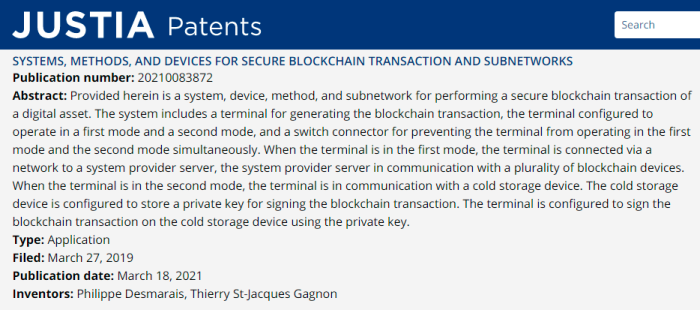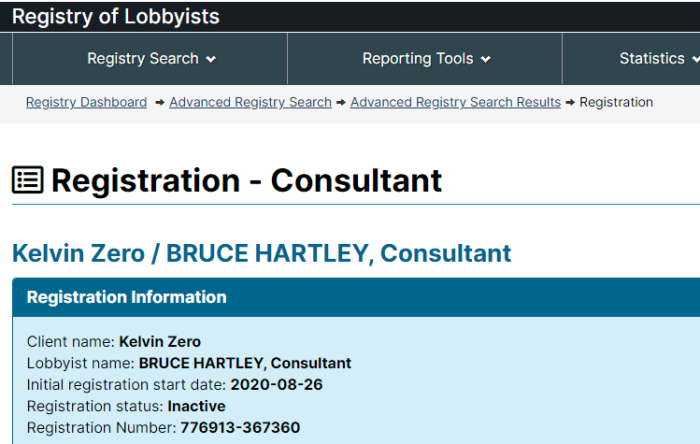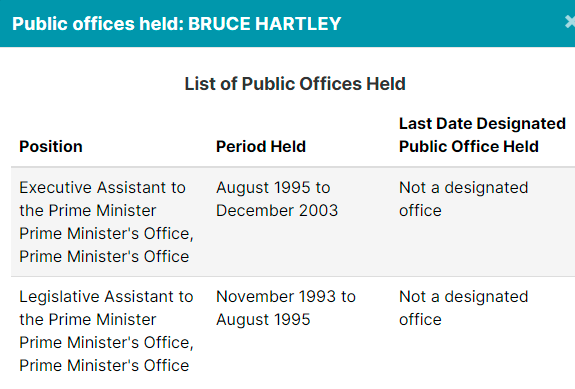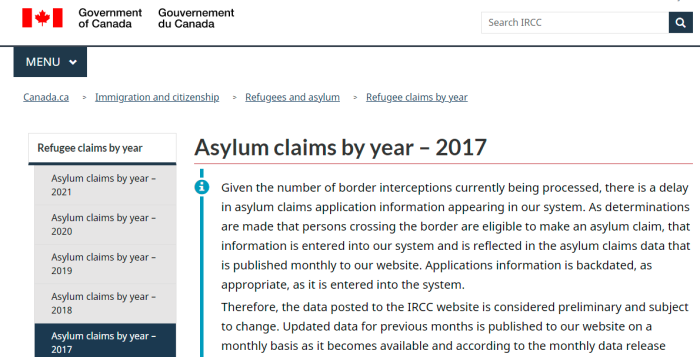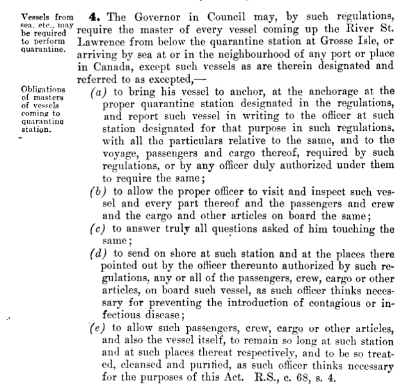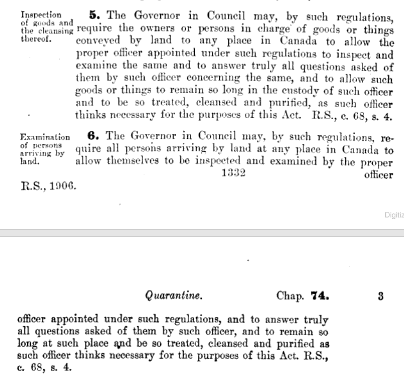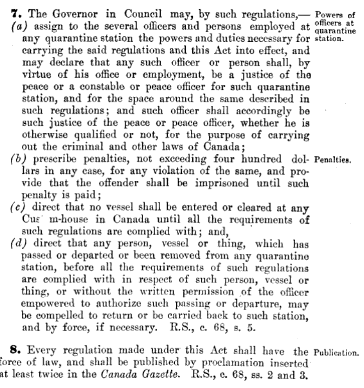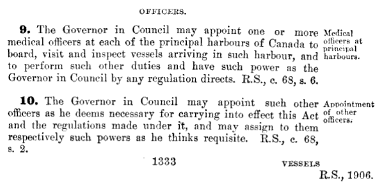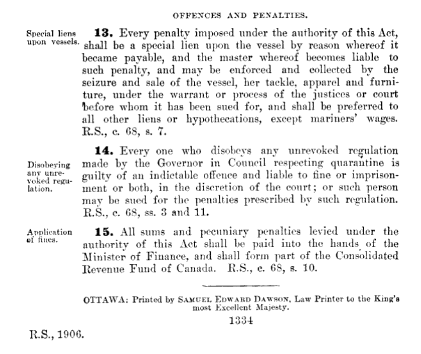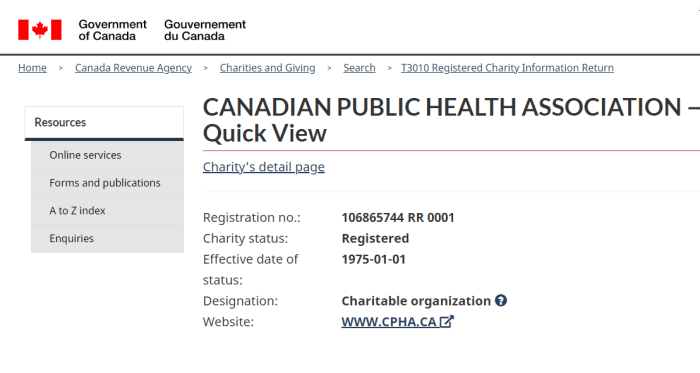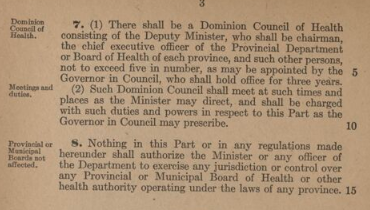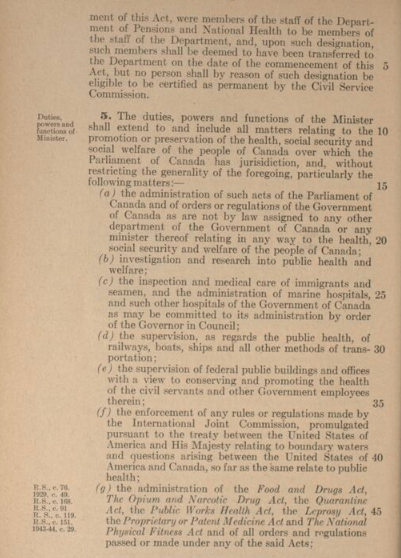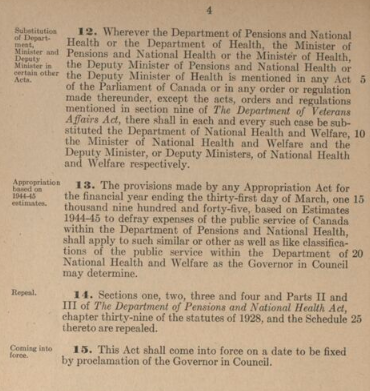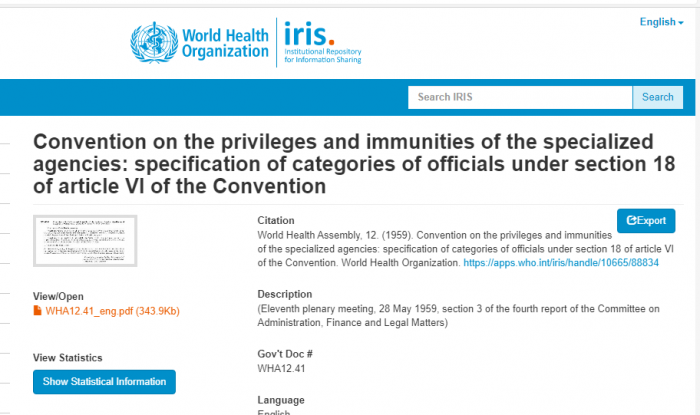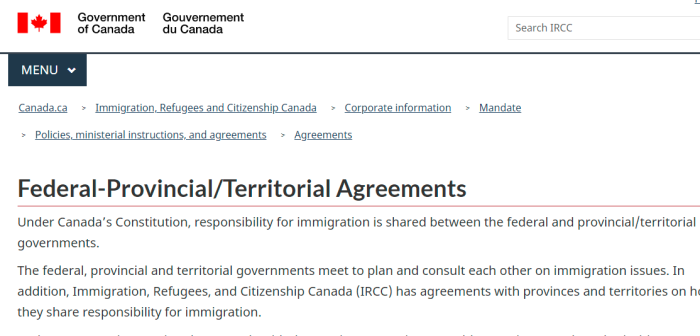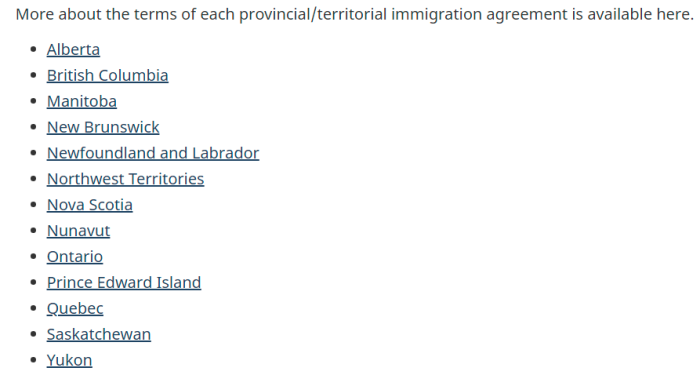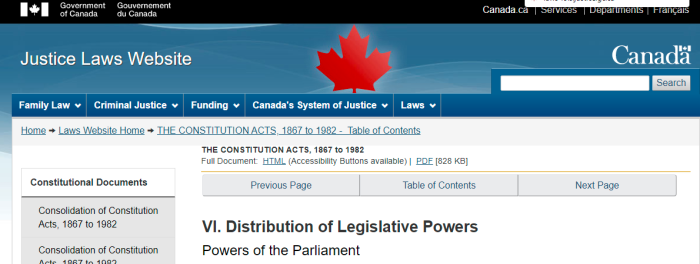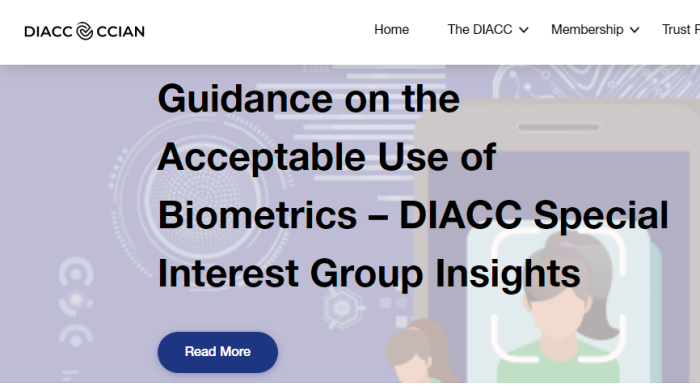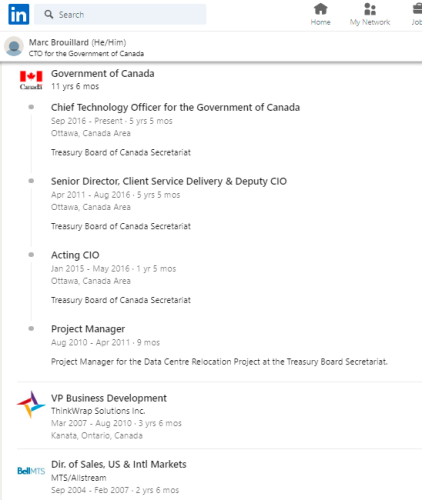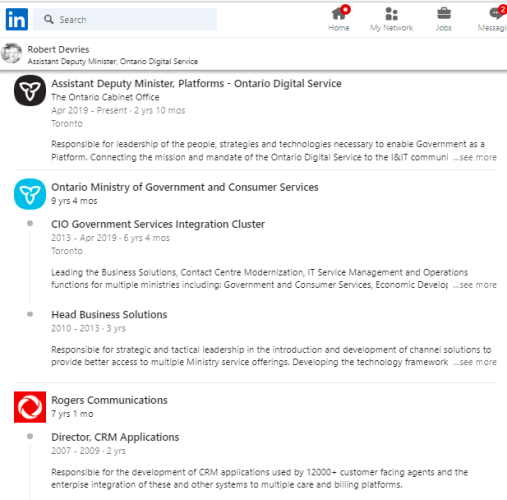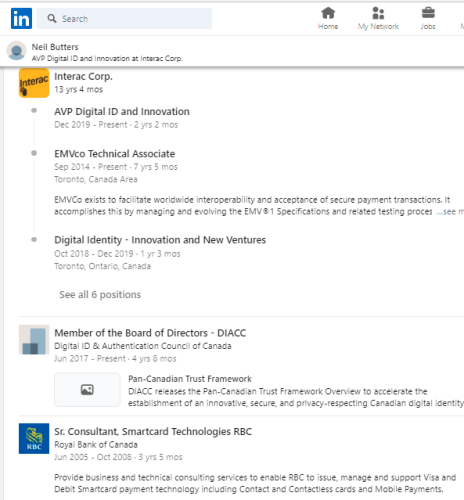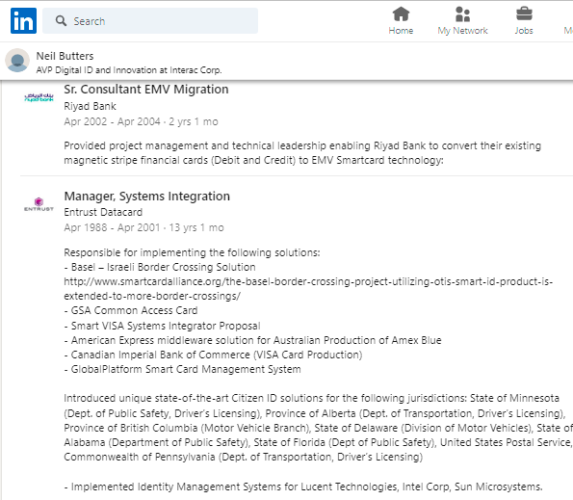
According to the CEWS Registry, the Canada Emergency Wage Subsidy has been handed out to some 235 institutions that have “Chamber of Commerce” as part of their name. That should alarm people, that hundreds of organizations that claim to promote business are getting handouts from Ottawa — or rather, taxpayers.
The Chambers of Commerce are just part of a long list of institutions that are getting funded to shill the “pandemic” narrative. These include: restaurants and hotels, political parties, law firms, more law firms, churches, and trucking associations, to name a few.
While it would be unrealistic to do a profile on all 235 organizations, let’s take a look at one: The Canadian Chamber of Commerce.

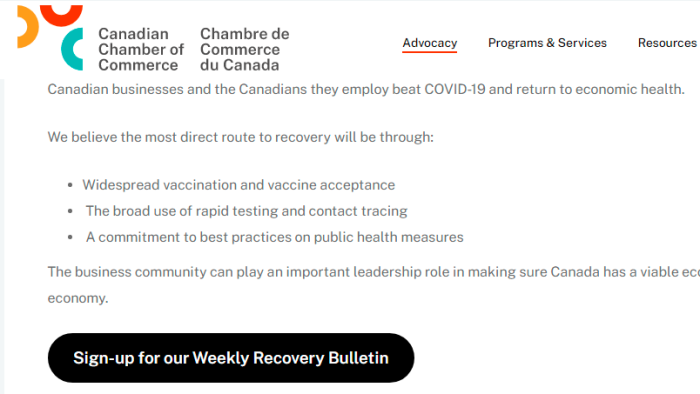
Description of the organization’s activities
Founded in 1925, the Canadian Chamber of Commerce is the nation’s largest business association, representing small and large firms from every sector and region in Canada. The Canadian Chamber is a network of 420 community chambers and boards of trade across Canada, in addition to individual corporate members and over 80 trade and professional organizations. The total membership exceeds 192,000. It is dedicated to the promotion and development of a strong economy. The chamber monitors federal and international issues, solicits the views of the Canadian business community and communicates them to policymakers in Ottawa and internationally. Headquartered in Ottawa, it also has staff in Toronto, Montreal and Calgary.
This is how the group describes its activities.
Instead of calling for people to be able to run their businesses freely, and with minimal interference, the Chamber of Commerce parrots the line that vaccines and rapid tests are the quickest way back to normal. On the surface, it looks like they are playing along because of the financial incentives provided. More on that coming up.
The “wins” they brag about include getting CEWS and CERS extended. CERS is the Canada Emergency Rental Subsidy which is available for businesses. This “business” group also brags about getting the hiring subsidy created, so that taxpayers help fund new employees.
While this organization does receive private donations, it undeniably is getting Government handouts as well. In fact, this has been happening for many years.
| GOVERNMENT BRANCH SOURCE | YEAR | AMOUNT |
|---|---|---|
| Bank of Canada | 2019 | $1,375.00 |
| Business Development Bank of Canada (BDC) | 2015 | $5,000.00 |
| Canada Foundation for Innovation | 2020 | $2,300.00 |
| Canada Mortgage and Housing Corporation (CMHC) | 2021 | $5,000.00 |
| Canada Post Corporation (CPC) | 2014 | $10,000.00 |
| Canada Post Corporation (CPC) | 2015 | $6,000.00 |
| Canada Post Corporation (CPC) | 2017 | $6,000.00 |
| Canada Post Corporation (CPC) | 2018 | $1,900.00 |
| Canada Post Corporation (CPC) | 2020 | $10,000.00 |
| Canada Post Corporation (CPC) | 2021 | $30,000.00 |
| Canada Revenue Agency (CRA) | 2020 | $850,623.60 |
| Canada Revenue Agency (CRA) | 2021 | $118,464.75 |
| Competition Bureau Canada (COBU) | 2016 | $1,800.00 |
| Employment and Social Development Canada (ESDC) | 2018 | $3,400.00 |
| Employment and Social Development Canada (ESDC) | 2019 | $74,496.00 |
| Employment and Social Development Canada (ESDC) | 2020 | $22,451.00 |
| Employment and Social Development Canada (ESDC) | 2021 | $12,180 |
| Environment and Climate Change Canada (ECCC) | 2017 | $56,548.68 |
| Environment and Climate Change Canada (ECCC) | 2018 | $29,600.00 |
| Environment and Climate Change Canada (ECCC) | 2019 | $2,500.00 |
| Export Development Canada (EDC) | 2014 | $37,500.00 |
| Export Development Canada (EDC) | 2015 | $29,000.00 |
| Export Development Canada (EDC) | 2016 | $42,000.00 |
| Export Development Canada (EDC) | 2017 | $63,000.00 |
| Export Development Canada (EDC) | 2018 | $65,000.00 |
| Export Development Canada (EDC) | 2019 | $65,000.00 |
| Export Development Canada (EDC) | 2020 | $51,000.00 |
| Export Development Canada (EDC) | 2021 | $79,100.00 |
| Farm Credit Canada (FCC) | 2018 | $2,500.00 |
| FedDev Agency for Southern Ontario | 2018 | $2,300.00 |
| FedDev Agency for Southern Ontario | 2020 | $2,300.00 |
| Global Affairs Canada (GAC) | 2017 | $1,900.00 |
| Global Affairs Canada (GAC) | 2018 | $1,900.00 |
| Global Affairs Canada (GAC) | 2019 | $2,300.00 |
| Health Canada (HC) | 2021 | $4,947,978.19 |
| Industry Canada | 2014 | $1,500.00 |
| Innovation, Science and Economic Development Canada | 2015 | $1,800.00 |
| Innovation, Science and Economic Development Canada | 2016 | $2,300.00 |
| Innovation, Science and Economic Development Canada | 2018 | $2,300.00 |
| Innovation, Science and Economic Development Canada | 2019 | $2,300.00 |
| Innovation, Science and Economic Development Canada | 2020 | $530,300.00 |
| Innovation, Science and Economic Development Canada | 2021 | $2,300.00 |
| Montreal Port Authority | 2020 | $5,000.00 |
| Montreal Port Authority | 2021 | $5,000.00 |
| Natural Resources Canada (NRCan) | 2015 | $132,300.00 |
| Natural Resources Canada (NRCan) | 2017 | $22,122.12 |
| Office of the Privacy Commissioner of Canada (OPC) | 2014 | $1,500.00 |
| Office of the Privacy Commissioner of Canada (OPC) | 2015 | $1,800.00 |
| Office of the Privacy Commissioner of Canada (OPC) | 2016 | $1,800.00 |
| Office of the Privacy Commissioner of Canada (OPC) | 2017 | $1,900.00 |
| Office of the Privacy Commissioner of Canada (OPC) | 2019 | $2,000.00 |
| Office of the Procurement Ombudsman (OPO) | 2020 | $2,300.00 |
| Office of the Taxpayers’ Ombudsman | 2018 | $2,300.00 |
| Ontario Federation of Agriculture | 2020 | $5,000.00 |
| Port Alberni Port Authority | 2016 | $10,000.00 |
| Prince Rupert Port Authority | 2016 | $4,500.00 |
| Public Works and Government Services Canada | 2014 | $1,500.00 |
| Royal Canadian Mint | 2014 | $2,500.00 |
| Vancouver Fraser Port Authority (Port Metro Vancouver) | 2014 | $32,500.00 |
| Vancouver Fraser Port Authority (Port Metro Vancouver) | 2015 | $10,000.00 |
| Vancouver Fraser Port Authority (Port Metro Vancouver) | 2016 | $43,000.00 |
| Vancouver Fraser Port Authority (Port Metro Vancouver) | 2017 | $65,000.00 |
| Vancouver Fraser Port Authority (Port Metro Vancouver) | 2018 | $50,000.00 |
| Vancouver Fraser Port Authority (Port Metro Vancouver) | 2019 | $40,000.00 |
| Vancouver Fraser Port Authority (Port Metro Vancouver) | 2020 | $40,000.00 |
| Vancouver Fraser Port Authority (Port Metro Vancouver) | 2021 | $57,500.00 |
| VIA Rail Canada | 2016 | $7,500.00 |
| VIA Rail Canada | 2017 | $18,500.00 |
| VIA Rail Canada | 2019 | $10,000.00 |
| VIA Rail Canada | 2020 | $10,000.00 |
| VIA Rail Canada | 2021 | $15,000.00 |
You’d be forgiven for thinking that these were really Communists. Now, what is the Chamber of Commerce getting for itself? The listings should scare you. Keep in mind, that other Chambers of Commerce are likely also receiving money at the local level.
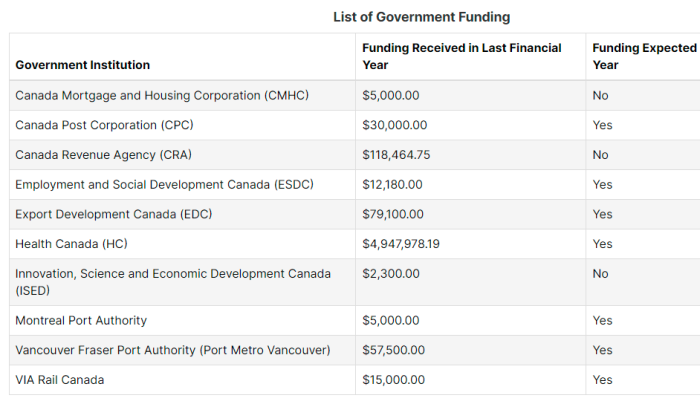
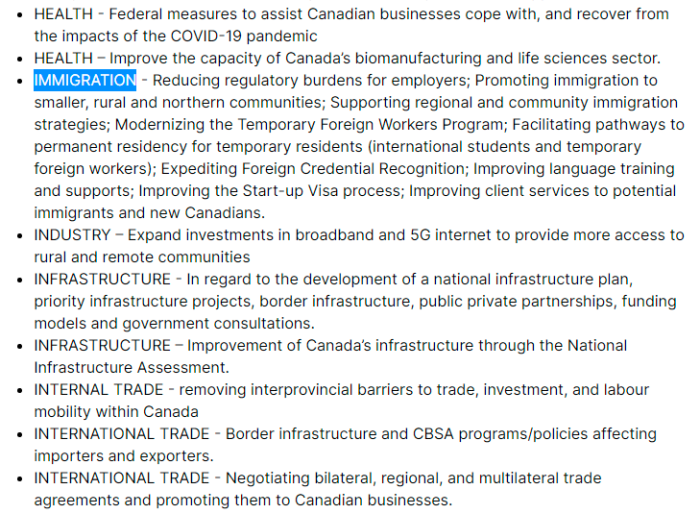
The Canadian Chamber of Commerce has been getting handouts going back many years. The CEWS is really just the least of it. It would also be interesting to know what the conditions were for that nearly $5 million they received from Health Canada.
The Chamber doesn’t appear to call for the end to martial law restrictions. Instead, they lobby for more handouts in order to cope with lockdowns. For a business orientated group, they seem completely okay with Government interference and restrictions.
There also appears to be no issue with policies like vaccine passports. After all, if Canadians don’t want to play along, they can just be replaced by TFWs who took the shots as a condition of employment.
This group also calls for drastically increased immigration, and more ways to remain in Canada. They also support free trade which will see industries outsourced based on cost. Think about how this plays out in the long term.
[1] Flood Canada with more people, driving up demand for work
[2] Support trade deals which reduce the supply of available work
Never mind the social impacts of importing large numbers from very different backgrounds, or the culture clash that will result. It appears these business groups don’t care about such things.
If you think it’s bad now, the agenda from a few years back is even worse. Or perhaps it’s just more open about what they really wanted then.
BORDER CROSSINGS – Beyond the Borders Initiative, with respect to implementation of the action plan items.
BORDER CROSSINGS – with respect to the development of a new International Crossing between Windsor and Detroit.
FREE TRADE AGREEMENTS – Promote balanced free trade agreements for Canada with Europe, India Japan and Korea. Promote Canada’s participation in the Trans-Pacific partnership and in the Trade in Services Agreement
IMMIGRATION – Expedited application process with regard to giving priority to applicants who possess skills in short supply in Canada and processing their applications within 6-12 months.
IMMIGRATION – Foreign Credentials Recognition Program with regard to working with the provinces/territories and business community to develop national accreditation standards to evaluate foreign credentials, professional and trade qualifications, and certification in regulated and non-regulated occupations that reflect employers’ needs
IMMIGRATION: Changes intended to attract and retain international students with respect to work permits, applications for permanent residency, and processing times for applications.
IMMIGRATION: Changes to increase the number of economic immigrants to this country to double the current rate. Renegotiation and signing of new memoranda of understanding with each of the provinces and territories to increase provincial caps for Provincial Nominee Programs. Adequate staffing of local Citizenship and Immigration Canada offices to meet demand and alleviate the labour market shortages.
IMMIGRATION: Regional strategy for settlement needs and at levels of service to ensure access to skilled workers in all regions of the country.
International Trade: Expanding trade and investment links with developing countries.
Labour: Ensuring that any changes to the Canada Labour Code are implemented only if they address a real problem or result in improvement for these employers, their employee and/or the Canadians they serve.
Labour: Asking the federal government, specifically the Department of Foreign Affairs, Trade and Development, to work with the Canadian private sector to identify ways to increase long-term formal employment opportunities for the poor in developing countries, and facilitate the availability of financial institutional products and services, including microfinance, to stimulate job creation for the poor
The above section includes items from 2014 (#36 on their profile with the Lobbying Registry). The Canadian Chamber of Commerce (and presumably all chapters) support virtually open borders as it ensures ready access to an endless supply of cheaper labour.
Put bluntly, Canadian taxpayers are helping to finance groups calling for outsourcing of industries, and the importing of a new work force for what’s left. It not only causes havoc with jobs, but drives down wages for the ones that remain.
Now, about those 235 groups receiving the CEWS:
- 1000 ISLANDS GANANOQUE CHAMBER OF COMMERCE
- ABBOTSFORD CHAMBER OF COMMERCE
- Aboriginal Chamber Of Commerce – Grand Rapids
- AIRDRIE CHAMBER OF COMMERCE
- ALBERNI VALLEY CHAMBER OF COMMERCE
- ALBERTA CHAMBERS OF COMMERCE
- ANNAPOLIS VALLEY CHAMBER OF COMMERCE
- AURORA CHAMBER OF COMMERCE
- BAFFIN REGIONAL CHAMBER OF COMMERCE
- BANCROFT & DISTRICT CHAMBER OF COMMERCE
- BATHURST CHAMBER OF COMMERCE
- BATTLEFORDS CHAMBER OF COMMERCE
- BEAUMONT CHAMBER OF COMMERCE ASSOCIATION
- BONNYVILLE & DISTRICT CHAMBER OF COMMERCE SOCIETY
- BOW VALLEY CHAMBER OF COMMERCE ASSOCIATION
- BRACEBRIDGE CHAMBER OF COMMERCE
- BRANDON CHAMBER OF COMMERCE
- BRAZIL-CANADA CHAMBER OF COMMERCE
- BRIGHTON AND DISTRICT CHAMBER OF COMMERCE
- BROCKVILLE CHAMBER OF COMMERCE
- BURLINGTON CHAMBER OF COMMERCE
- BURNS LAKE & DISTRICT CHAMBER OF COMMERCE
- CAMBRIDGE CHAMBER OF COMMERCE
- CAMERA DI COMMERCIO ITALIANA DELL’ ONTARIO/ITALIAN CHAMBER OF COMMERCE OF ONTARIO
- CAMPBELL RIVER AND DISTRICT CHAMBER OF COMMERCE
- CAMROSE CHAMBER OF COMMERCE
- CANADIAN GERMAN CHAMBER OF INDUSTRY AND COMMERCE INC
- Canadian Women’s Chamber of Commerce
- CASTLEGAR & DISTRICT CHAMBER OF COMMERCE
- CENTRE WELLINGTON CHAMBER OF COMMERCE
- CHAMBER OF COMMERCE BRANTFORD-BRANT
- CHAMBER OF COMMERCE SERVING COQUITLAM, PORT COQUITLAM PORT MOODY
- Chamber of Marine Commerce CHAMBRE DE COMMERCE MARITIME
- Chambre de commerce Canada-Floride/ Chamber of commerce Canada-florida
- Chambre de commerce de l’Est de Montréal Eastern Montreal Chamber of Commerce
- CHAMBRE DE COMMERCE ET D’INDUSTRIE DE BÉCANCOUR NICOLET-YAMASKA / BECANCOUR NICOLET-YAMASKA CHAMBER OF COMMERCE
- CHARLOTTETOWN CHAMBER OF COMMERCE
- CHATHAM-KENT CHAMBER OF COMMERCE
- CHETWYND CHAMBER OF COMMERCE
- CHILLIWACK CHAMBER OF COMMERCE
- CLOVERDALE DISTRICT CHAMBER OF COMMERCE
- Coboconk, Norland & Area Chamber of Commerce
- COLD LAKE REGIONAL CHAMBER OF COMMERCE ASSOCIATION
- COLUMBIA VALLEY CHAMBER OF COMMERCE
- CORNWALL CHAMBER OF COMMERCE
- COWICHAN LAKE DISTRICT CHAMBER OF COMMERCE
- CRANBROOK CHAMBER OF COMMERCE
- DAWSON CITY CHAMBER OF COMMERCE ASSOCIATION
- DAWSON CREEK & DISTRICT CHAMBER OF COMMERCE
- DELTA CHAMBER OF COMMERCE
- DRUMHELLER AND DISTRICT CHAMBER OF COMMERCE
- DRYDEN DISTRICT CHAMBER OF COMMERCE
- DUNCAN-COWICHAN CHAMBER OF COMMERCE
- EAST GWILLIMBURY CHAMBER OF COMMERCE
- EAST HANTS AND DISTRICTS CHAMBER OF COMMERCE
- Eastern Prince Edward Island Chamber of Commerce Inc.
- EDMONTON CHAMBER OF COMMERCE
- EDMUNDSTON CHAMBER OF COMMERCE/LA CHAMBRE DE COMMERCE DE LA REGION D’EDMUNDSTON INC
- ESTEVAN CHAMBER OF COMMERCE
- FENELON FALLS CHAMBER OF COMMERCE
- FERNIE CHAMBER OF COMMERCE
- FORT FRANCES CHAMBER OF COMMERCE
- FORT MACLEOD AND DISTRICT CHAMBER OF COMMERCE
- FORT MCMURRAY CHAMBER OF COMMERCE
- FORT NELSON CHAMBER OF COMMERCE
- FORT SASKATCHEWAN CHAMBER OF COMMERCE
- FORT ST JOHN AND DISTRICT CHAMBER OF COMMERCE
- FREDERICTON CHAMBER OF COMMERCE
- GANDER & AREA CHAMBER OF COMMERCE INC
- GEORGINA CHAMBER OF COMMERCE
- GIBSONS AND DISTRICT CHAMBER OF COMMERCE
- GRANDE PRAIRIE CHAMBER OF COMMERCE
- GRAVENHURST CHAMBER OF COMMERCE
- GREATER BARRIE CHAMBER OF COMMERCE
- GREATER KINGSTON CHAMBER OF COMMERCE
- GREATER LANGLEY CHAMBER OF COMMERCE
- GREATER NANAIMO CHAMBER OF COMMERCE
- GREATER NIAGARA CHAMBER OF COMMERCE
- GREATER OSHAWA CHAMBER OF COMMERCE
- GREATER PETERBOROUGH CHAMBER OF COMMERCE
- Greater Saskatoon Chamber of Commerce
- GREATER SUDBURY CHAMBER OF COMMERCE
- GREATER VERNON CHAMBER OF COMMERCE
- GREATER VICTORIA CHAMBER OF COMMERCE
- GRIMSBY & DISTRICT CHAMBER OF COMMERCE
- GUANGDONG CHAMBER OF COMMERCE (CANADA)
- GUELPH CHAMBER OF COMMERCE
- HALIBURTON HIGHLANDS CHAMBER OF COMMERCE
- HALIFAX CHAMBER OF COMMERCE
- HALTON HILLS CHAMBER OF COMMERCE
- HUMBOLDT AND DISTRICT CHAMBER OF COMMERCE CORP.
- HUNTSVILLE CHAMBER OF COMMERCE
- INDO-CANADA CHAMBER OF COMMERCE
- INNISFAIL AND DISTRICT CHAMBER OF COMMERCE SOCIETY
- ITALIAN CHAMBER OF COMMERCE IN CANADA – WEST/CAMERA DI COMMERCIO ITALIANA IN CANADA – OVEST
- JASPER PARK CHAMBER OF COMMERCE
- KAMLOOPS CHAMBER OF COMMERCE
- KAWARTHA LAKES CHAMBER OF COMMERCE-EASTERN REGION
- KELOWNA CHAMBER OF COMMERCE
- KENORA AND DISTRICT CHAMBER OF COMMERCE
- KENSINGTON AND AREA CHAMBER OF COMMERCE
- KIMBERLEY BAVARIAN SOCIETY
- KINDERSLEY CHAMBER OF COMMERCE
- KITIMAT CHAMBER OF COMMERCE
- LA CHAMBRE DE COMMERCE DE GASPE – /GASPÉ CHAMBER OF COMMERCE
- LA CHAMBRE DE COMMERCE DE MANIWAKI-THE MANIWAKI CHAMBER OF COMMERCE
- LA CHAMBRE DE COMMERCE ITALIENNE AU CANADA. ITALIAN CHAMBER OF COMMERCE IN CANADA CAMERA DI COMMERCIO ITALIANA IN CANADA
- LA CRETE AREA CHAMBER OF COMMERCE
- LAB WEST CHAMBER OF COMMERCE
- LABRADOR NORTH CHAMBER OF COMMERCE INC.
- LAC LA BICHE & DISTRICT CHAMBER OF COMMERCE
- Lacombe and District Chamber of Commerce
- LADYSMITH CHAMBER OF COMMERCE
- LAKE COUNTRY CHAMBER OF COMMERCE
- LEAMINGTON DISTRICT CHAMBER OF COMMERCE
- LEDUC REGIONAL CHAMBER OF COMMERCE
- LETHBRIDGE CHAMBER OF COMMERCE
- LINCOLN CHAMBER OF COMMERCE
- LINDSAY CHAMBER OF COMMERCE
- LLOYDMINSTER CHAMBER OF COMMERCE
- LONDON CHAMBER OF COMMERCE
- MEDICINE HAT AND DISTRICT CHAMBER OF COMMERCE
- MILTON CHAMBER OF COMMERCE
- MOOSE JAW CHAMBER OF COMMERCE
- MORDEN AND DISTRICT CHAMBER OF COMMERCE
- MOUNT PEARL PARADISE CHAMBER OF COMMERCE
- MUSKOKA LAKES CHAMBER OF COMMERCE
- NELSON AND DISTRICT CHAMBER OF COMMERCE
- NEW WESTMINSTER CHAMBER OF COMMERCE
- NEWMARKET CHAMBER OF COMMERCE INC.
- NIAGARA-ON-THE-LAKE CHAMBER OF COMMERCE
- NORTH BAY AND DISTRICT CHAMBER OF COMMERCE
- Northumberland Central Chamber of Commerce
- NWT CHAMBER OF COMMERCE
- OAKVILLE CHAMBER OF COMMERCE
- ORILLIA AND DISTRICT CHAMBER OF COMMERCE
- ORO-MEDONTE CHAMBER OF COMMERCE
- OWEN SOUND & DISTRICT CHAMBER OF COMMERCE
- PARKSVILLE & DISTRICT CHAMBER OF COMMERCE
- PEACE RIVER BOARD OF TRADE AND CHAMBER OF COMMERCE
- PEACHLAND CHAMBER OF COMMERCE
- PEMBERTON AND DISTRICT CHAMBER OF COMMERCE
- PENTICTON AND WINE COUNTRY CHAMBER OF COMMERCE
- PLACENTIA AREA CHAMBER OF COMMERCE
- PONOKA & DISTRICT CHAMBER OF COMMERCE SOCIETY
- PORT HARDY & DISTRICT CHAMBER OF COMMERCE
- PORT HOPE AND DISTRICT CHAMBER OF COMMERCE
- PORTAGE LA PRAIRIE AND DISTRICT CHAMBER OF COMMERCE
- POWELL RIVER CHAMBER OF COMMERCE
- PRAIRIE SKY CHAMBER OF COMMERCE INC.
- PRINCE GEORGE CHAMBER OF COMMERCE
- QUESNEL AND DISTRICT CHAMBER OF COMMERCE
- QUINTE WEST CHAMBER OF COMMERCE
- RADIUM HOT SPRINGS CHAMBER OF COMMERCE
- RED DEER CHAMBER OF COMMERCE
- REGINA & DISTRICT CHAMBER OF COMMERCE
- RENFREW CHAMBER OF COMMERCE
- REVELSTOKE CHAMBER OF COMMERCE
- RICHMOND CHAMBER OF COMMERCE
- RUSSELL AND DISTRICT CHAMBER OF COMMERCE
- SALT SPRING ISLAND CHAMBER OF COMMERCE
- SARNIA LAMBTON CHAMBER OF COMMERCE
- SASKATCHEWAN CHAMBER OF COMMERCE
- SAUGEEN SHORES CHAMBER OF COMMERCE
- SAULT STE MARIE AND DISTRICT OF CHAMBER OF COMMERCE
- SELKIRK & DISTRICT CHAMBER OF COMMERCE INC
- SHERWOOD PARK & DISTRICT CHAMBER OF COMMERCE
- SICAMOUS AND DISTRICT CHAMBER OF COMMERCE
- SIMCOE AND DISTRICT CHAMBER OF COMMERCE
- SMITHERS DISTRICT CHAMBER OF COMMERCE
- SMITHS FALLS CHAMBER OF COMMERCE
- SOCIETY OF THE MORINVILLE AND DISTRICT CHAMBER OF COMMERCE
- SOUTH SURREY AND WHITE ROCK CHAMBER OF COMMERCE
- SOUTHERN GEORGIAN BAY CHAMBER OF COMMERCE
- Springfield Chamber of Commerce Inc.
- SQUAMISH CHAMBER OF COMMERCE.
- ST. ALBERT AND DISTRICT CHAMBER OF COMMERCE SOCIETY
- ST PAUL & DISTRICT CHAMBER OF COMMERCE ASSOCIATION
- ST THOMAS CHAMBER OF COMMERCE
- STONY PLAIN & DISTRICT CHAMBER OF COMMERCE
- STRATHROY AND DISTRICT CHAMBER OF COMMERCE
- SUMMERLAND CHAMBER OF COMMERCE
- SUSSEX AND DISTRICT CHAMBER OF COMMERCE INC.
- SWIFT CURRENT CHAMBER OF COMMERCE
- SYLVAN LAKE CHAMBER OF COMMERCE
- THE ARMSTRONG-SPALLUMCHEEN CHAMBER OF COMMERCE
- THE BRITISH COLUMBIA CHAMBER OF COMMERCE
- THE CALGARY CHAMBER OF COMMERCE
- THE CANADIAN CHAMBER OF COMMERCE
- THE CHAMBER OF COMMERCE NIAGARA FALLS, CANADA
- THE EDSON AND DISTRICT CHAMBER OF COMMERCE
- The Greater Kitchener Waterloo Chamber of Commerce
- THE GREATER MONCTON CHAMBER OF COMMERCE
- THE GREATER SUMMERSIDE CHAMBER OF COMMERCE
- THE HAMILTON CHAMBER OF COMMERCE
- THE MACKENZIE CHAMBER OF COMMERCE
- THE MANITOBA CHAMBERS OF COMMERCE
- THE MOUNT FOREST DISTRICT CHAMBER OF COMMERCE
- THE PARRY SOUND AREA CHAMBER OF COMMERCE
- THE PAS AND DISTRICT CHAMBER OF COMMERCE
- THE PERTH CHAMBER OF COMMERCE
- THE PRINCE EDWARD COUNTY CHAMBER OF COMMERCE
- THE SAANICH PENINSULA CHAMBER OF COMMERCE
- THE TABER CHAMBER OF COMMERCE
- The Winkler and District Chamber of Commerce
- THE WINNIPEG CHAMBER OF COMMERCE
- THUNDER BAY CHAMBER OF COMMERCE
- TILLSONBURG DISTRICT CHAMBER OF COMMERCE
- TIMMINS CHAMBER OF COMMERCE
- TOBERMORY & DISTRICT CHAMBER OF COMMERCE
- TOFINO-LONG BEACH CHAMBER OF COMMERCE
- Trail Chamber of Commerce
- TRENT HILLS AND DISTRICT CHAMBER OF COMMERCE
- TRURO AND DISTRICT CHAMBER OF COMMERCE
- UCLUELET CHAMBER OF COMMERCE
- VAUGHAN CHAMBER OF COMMERCE
- VEGREVILLE & DISTRICT CHAMBER OF COMMERCE
- VERMILION CHAMBER OF COMMERCE
- WASKESIU CHAMBER OF COMMERCE
- WELLAND/PELHAM CHAMBER OF COMMERCE
- WEST PRINCE CHAMBER OF COMMERCE
- WEST SHORE CHAMBER OF COMMERCE
- WEST VANCOUVER CHAMBER OF COMMERCE
- WEYBURN CHAMBER OF COMMERCE
- WHITBY CHAMBER OF COMMERCE
- WHITCHURCH STOUFFVILLE CHAMBER OF COMMERCE
- WHITECOURT AND DISTRICT CHAMBER OF COMMERCE
- WHITEHORSE CHAMBER OF COMMERCE
- WIARTON AND DISTRICT CHAMBER OF COMMERCE
- WILLIAMS LAKE & DISTRICT CHAMBER OF COMMERCE
- Windsor-Essex Regional Chamber of Commerce
- WOODSTOCK CHAMBER OF COMMERCE
- YARMOUTH AND AREA CHAMBER OF COMMERCE
- YELLOWKNIFE CHAMBER OF COMMERCE
- YORKTON CHAMBER OF COMMERCE
Do you get it now? Your tax dollars are being used to support these “Chambers of Commerce”. These groups lobby Federal and Provincial Governments to spend even more money propping up businesses which impose mask and vaccine rules. They also support the open border agenda to mass import people who will work for less, and who are more receptive to taking experimental shots.
In many ways, this comes across as a protection racket. These groups push for certain “safety” grants and measures for their members, but always ones that profit them as well.
(1) https://chamber.ca/
(2) https://chamber.ca/campaign/business-led-recovery/
(3) https://chamber.ca/advocacy/wins-for-canadian-business/
(4) https://apps.cra-arc.gc.ca/ebci/hacc/cews/srch/pub/bscSrch
(5) https://apps.cra-arc.gc.ca/ebci/habs/cews/srch/pub/dsplyBscSrch?request_locale=en
(6) https://lobbycanada.gc.ca/app/secure/ocl/lrs/do/vwRg?regId=812012&cno=15787#regStart
(A) https://canucklaw.ca/media-subsidies-and-govt-financing/
(B) https://canucklaw.ca/media-controlled-opposition/
(C) https://canucklaw.ca/groups-calling-for-vaccine-passports-heavily-subsidized-by-government/
(D) https://canucklaw.ca/trudeau-using-taxpayer-money-to-subsidize-opposition-parties-liberals-too/
(E) https://canucklaw.ca/law-firms-bar-associations-receiving-canada-emergency-wage-subsidy-cews/
(F) https://canucklaw.ca/conflicting-out-its-not-just-cews-that-the-lawyers-are-receiving/
(G) https://canucklaw.ca/following-the-money-why-are-churches-really-pushing-the-vaxx-agenda
(H) https://canucklaw.ca/canadian-trucking-alliance-raising-lots-of-questions-lately/


